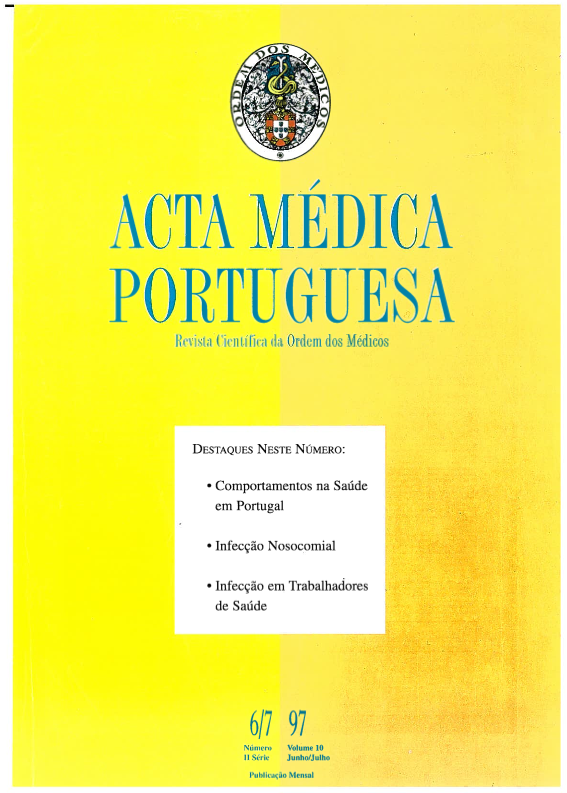Sindrome de Lyell num doente com SIDA.
DOI:
https://doi.org/10.20344/amp.2440Resumo
Toxic epidermal necrolysis (TEN), or Lyell's syndrome, is a rare cutaneous reaction, most often drug related with drugs such as sulfonamides, non-steroidal anti-inflammatory drugs, anti-convulsants and allopurinol. It is characterised by extensive mucocutaneous detachment and usually associated with severe constitutional symptoms. The mortality rate is about 20-66%. The incidence of TEN is increasing among HIV-infected patients, mostly those in an advanced stage of the disease. Although the pathophysiology of TEN is still unclear, data have been reported that support different aetiologies: an immune mechanism, an abnormal pattern of drug biotransformation and a modulating genetic susceptibility. The diagnosis of Lyell's syndrome is mainly clinical because the confirmation of the drug involved is more difficult since there are no safe and reliable skin or in vitro tests that are generally available. THe authors report a case of TEN in a patient with AIDS whose clinical characteristics and evolution are a particular example of this pathology and of the related problems of diagnosis and therapeutics. The fact that this patient presented a prior adverse drug reaction (ADR) besides Lyell's syndrome and a later cutaneous hyperreactivity, raised a complex problem: the risk of reintroducing drugs previously withdrawn due to their possible association with ADRs and the absolute need to treat active disorders. In view of the increased risk of severe cutaneous ADRs, namely TEN, in patients with AIDS, the authors point out the need to set up new guidelines concerning both an early and accurate diagnosis and treatment of these situations and the management of subsequent therapeutics.Downloads
Downloads
Como Citar
Edição
Secção
Licença
Todos os artigos publicados na AMP são de acesso aberto e cumprem os requisitos das agências de financiamento ou instituições académicas. Relativamente à utilização por terceiros a AMP rege-se pelos termos da licença Creative Commons ‘Atribuição – Uso Não-Comercial – (CC-BY-NC)’.
É da responsabilidade do autor obter permissão para reproduzir figuras, tabelas, etc., de outras publicações. Após a aceitação de um artigo, os autores serão convidados a preencher uma “Declaração de Responsabilidade Autoral e Partilha de Direitos de Autor “(http://www.actamedicaportuguesa.com/info/AMP-NormasPublicacao.pdf) e a “Declaração de Potenciais Conflitos de Interesse” (http://www.icmje.org/conflicts-of-interest) do ICMJE. Será enviado um e-mail ao autor correspondente, confirmando a receção do manuscrito.
Após a publicação, os autores ficam autorizados a disponibilizar os seus artigos em repositórios das suas instituições de origem, desde que mencionem sempre onde foram publicados e de acordo com a licença Creative Commons









